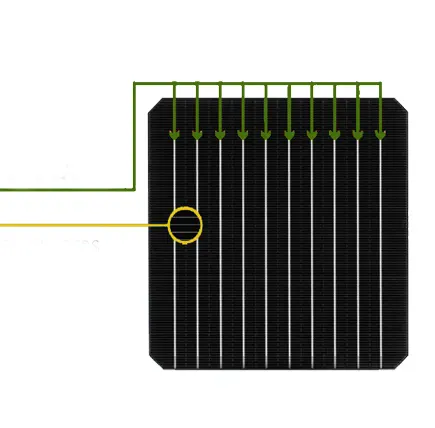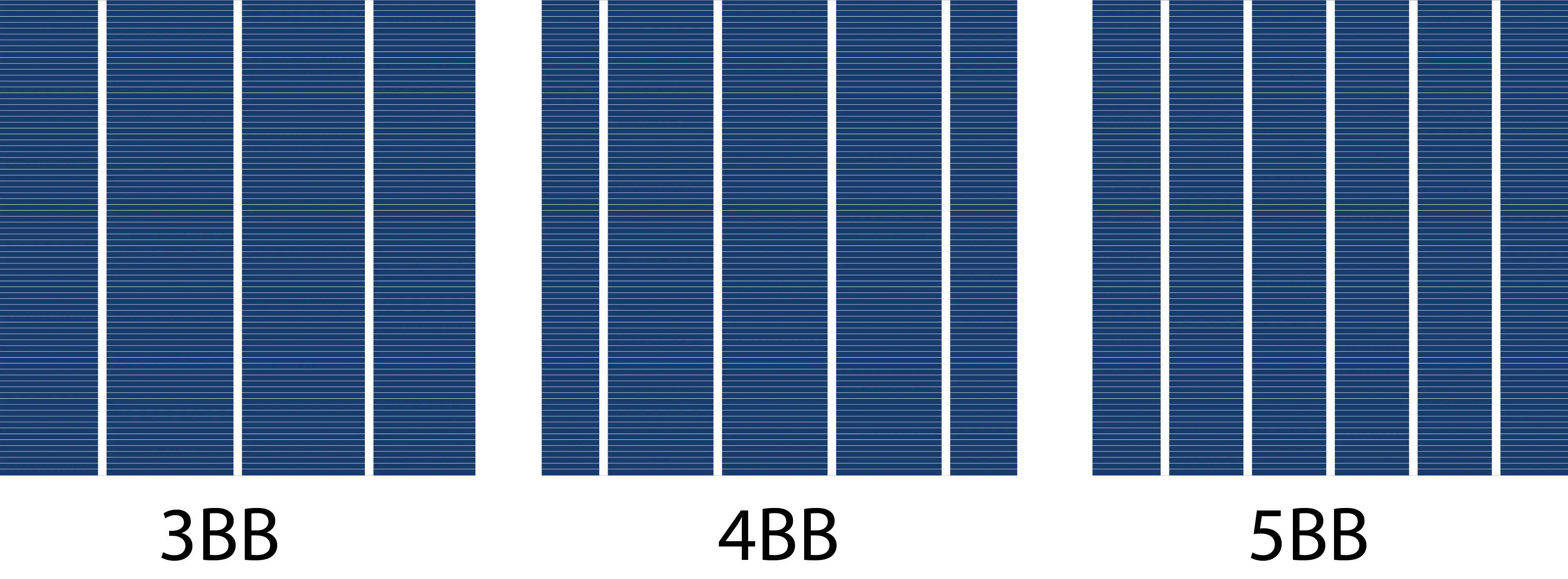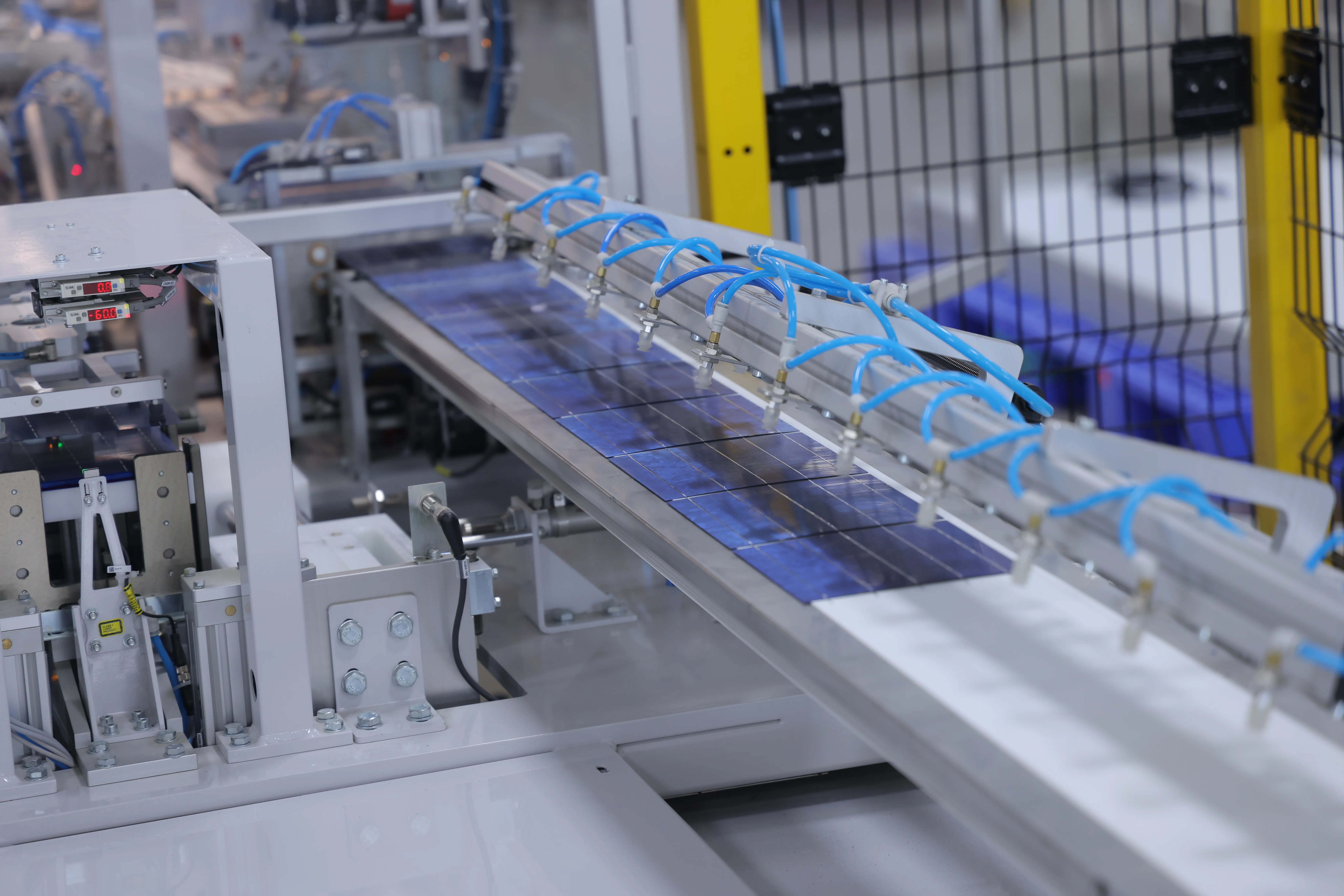BusBar Transformation: A Necessity for Advancing Solar Growth
In an era where sustainable and renewable energy sources are more crucial than ever, solar energy stands out as a beacon of hope and innovation. At the heart of solar energy technology are solar modules, complex assemblies that capture and convert sunlight into usable electrical energy. A key component in the efficiency and effectiveness of these modules is the BusBar technology. This newsletter delves into the critical role of BusBar transition in the growth of solar technology, with a specific focus on solar module manufacture and its burgeoning significance in India.

The Imperative of Advancing BusBar Technology
In the pursuit of optimizing energy production in solar modules, one of the most investigated strategies is the enhancement of busbar numbers. The photovoltaic (PV) industry has dedicated considerable effort to researching busbar technology, aiming to diminish electrical and shading losses, and thus, amplify the energy harvested from each cell. This approach has become increasingly relevant in the era of advanced, high-efficiency technologies like PERC and heterojunction.
For those new to the concept, busbars are the metallic strips that extend across each solar cell, from front to back. Their primary function is to gather the electrons produced by the solar cell when it is exposed to sunlight. Recent studies have underscored that the efficiency of current solar modules is also linked to the quantity of busbars present on the cells within the module. Remarkably, less than half a decade ago, solar modules typically featured just two busbars. This number evolved to three and four, and the current trend is shifting towards the implementation of twelve busbars.
Technologies like Multi BusBar (MBB), which involves the use of twelve or more busbars made of copper, and busbarless (back contact) technology, are emerging as promising avenues for the future of solar energy. It's essential to explore the impact of adopting twelve busbars in comparison to the traditional three or four, to understand the advancements and potential benefits of this evolution in busbar technology.
The Significance of BusBar Technology in Solar Modules
The introduction of BusBar technology marked a revolutionary step in solar module design. Traditional solar modules, while effective, faced limitations in terms of electrical loss and resistance, which impeded their overall efficiency. BusBars address these issues by providing a more streamlined and efficient pathway for the flow of electric current. They minimize losses and enhance the ability of the module to produce more energy even under less than ideal conditions, such as low light or high temperatures.
Comparing traditional solar modules with those enhanced by BusBar technology illustrates a clear improvement in performance. BusBar-equipped modules demonstrate higher efficiency rates, better durability, and greater resistance to common issues like shading and soiling.

BusBar Technology - A Catalyst for Solar Energy Growth
The global energy landscape is rapidly shifting towards renewable sources, with solar energy at the forefront. Statistical data from various international energy agencies highlights a steady and significant increase in the adoption of solar energy.This growth is partly attributed to technological advancements like BusBar technology, which have made solar modules more efficient and cost-effective.
Case studies from different parts of the world reveal the transformative impact of BusBar technology. In regions with high solar potential, the adoption of BusBar-enhanced modules has led to a notable increase in energy output, directly contributing to the growth of solar energy infrastructures.
Enhanced Electron Collection with More Busbars
The effectiveness of electron collection in a solar cell is greatly influenced by the number of busbars. Busbars, which are the contact points connected to the cell's fingers, play a crucial role in this process. With an increase in the number of busbars, more electrons can be efficiently channeled into the cell's electrical conduction system before they recombine with 'holes.' This leads to a noticeable reduction in the electrical loss within the cell.
Reduced Shading Loss with Slimmer Busbars
As the count of busbars rises, a simultaneous decrease in their thickness is observed. This reduction in size contributes significantly to minimizing shading loss, which occurs due to the presence of busbars on the cell's surface. Furthermore, thinner busbars require less silver, leading to cost implications for the solar modules.
Lower Degradation and Enhanced Durability with More Busbars
Solar cells experience a degree of degradation during the soldering process into modules. Studies indicate that modules with 3 and 4 busbars experience a certain level of efficiency loss. However, modules equipped with 5+ busbars, featuring shorter gaps between them, can reduce residual stress by approximately 10%. This lower level of degradation in 5+ busbar modules translates to better durability, a longer lifespan, and an increased advantage in energy generation.

Implications for Energy Generation and Efficiency
It becomes evident that increasing the number of busbar stripes on solar cells significantly enhances the module's energy collection capability, pushing the boundaries of known energy generation limits.
As the global community progresses towards embracing solar energy as a mainstream power source, the drive to make solar modules more efficient gains paramount importance. Increasing the number of busbars not only improves the number of contact points within a solar cell but also makes the solar module more proficient in generating green energy. This enhancement in energy collection efficiency also addresses the issue of hotspot formation, which traditionally reduces the energy generation capacity of solar modules. The introduction of 5+ busbar modules, therefore, presents a solution to this challenge, further solidifying their role in advancing solar technology.

Solar Module Manufacturing - The Indian Scenario
India's journey in solar module manufacturing is a testament to the country's commitment to renewable energy. As one of the sunniest countries, with about 300 clear sunny days in a year, India has a huge potential for solar energy. This potential is being realized through substantial investments in solar technology, with an emphasis on enhancing solar module efficiency.
The integration of BusBar technology in solar modules is a significant step for Indian manufacturers. It not only aligns with global technological standards but also positions India as a key player in the solar energy market. With the government's ambitious targets for renewable energy, especially solar, the adoption of advanced technologies like BusBars is crucial.
Indian solar module manufacturers are increasingly focusing on incorporating BusBars into their products. This shift is driven by the need for higher efficiency modules, which in turn reduce the cost of solar electricity. The government, recognizing the importance of this technology, has introduced various policies and incentives to encourage the production and adoption of advanced solar modules.
Challenges and Opportunities
Despite the clear benefits, the transition to BusBar technology in solar modules is not without challenges. On the technical front, the integration of BusBars requires precision engineering and high-quality materials, which can increase the initial cost of solar modules. Additionally, the manufacturing process needs to be adapted to accommodate the new technology, requiring investment in new machinery and training for personnel.
Economically, the higher initial cost of BusBar-enhanced solar modules can be a deterrent, especially in price-sensitive markets. However, the long-term benefits in terms of efficiency and durability often offset these initial costs.
Looking ahead, there are significant opportunities for further development in BusBar technology. Continuous research and development can lead to even more efficient designs, further reducing electrical losses and increasing the overall output of solar modules. The evolution of BusBar technology also opens up new possibilities for integrating solar energy into a variety of applications, further driving the growth of renewable energy.
Wrapping Up
The BusBar transition in solar module technology is more than just an incremental improvement; it's a pivotal shift that is driving the growth of solar energy globally. With higher efficiency, improved durability, and the potential for further advancements, BusBar technology is setting new standards in the solar industry.
In India, the embrace of this technology is particularly significant. As the country strides towards its ambitious renewable energy goals, the adoption of advanced technologies like BusBars in solar modules will play a crucial role. For manufacturers, policymakers, and consumers alike, understanding and supporting this transition is crucial for the continued growth of solar energy.
As we look to a future powered increasingly by renewable sources, the importance of technological advancements such as BusBars cannot be overstated. They represent not just a step forward in solar module design, but a leap towards a more sustainable and efficient energy future.